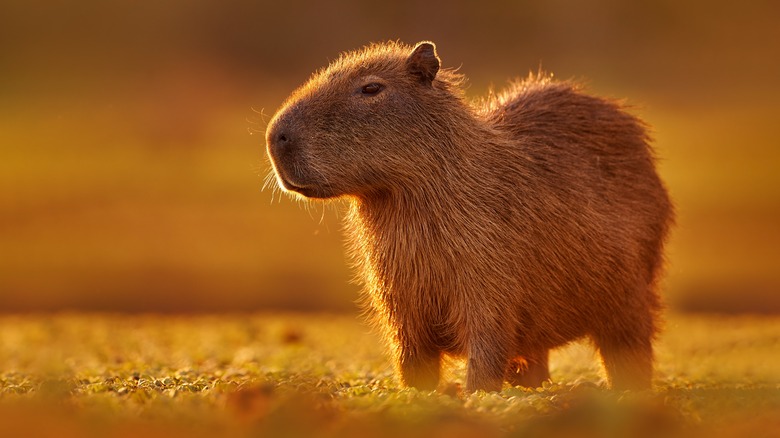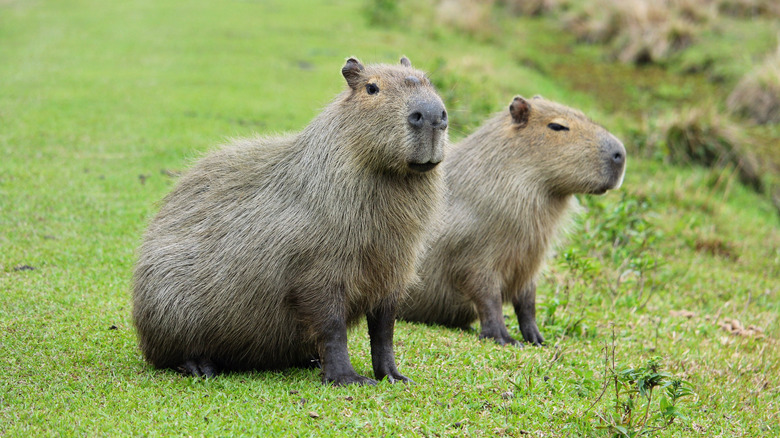Why Capybara Was Once Considered A Fish
Rodents are widely overlooked in the culinary world, an inclination that might make sense if your mind is stuck on images of mice and rats, but comes into question once you open your eyes to broader horizons. In Nova Scotia, the indigenous Mi'kmaq traditionally made meals of beaver and porcupine (via Nova Scotia Museum). To this day in Peru, guinea pigs, known to locals as "cuy," are considered a delicacy and can fetch a high price in the fine-dining establishments of Lima, per BBC.
There are, in fact, a vast number of ways to enjoy rodents from the small to the large to the very large. The capybara is the largest rodent in the world, reaching up to two feet tall and weighing as much as 143 pounds, according to National Geographic. If you want to get the most meat for your trouble, this is undoubtedly the rodent to go for. Native to South America, capybaras hold a particularly special place in Venezuelan cuisine.
According to The New York Times, capybara, called "chigüire" in Venezuela, is immensely popular, especially in rural areas, and its taste is described as being similar to rabbit. However, Atlas Obscura notes that the meat is almost always dried in sea salt before serving, imparting a slightly fishy flavor. Depending on who you ask, and when you ask them, some locals might even tell you that capybara is a fish.
A loophole for Lent
Venezuela was colonized by the Spanish in the 16th century, with Roman Catholic missionaries assuming control over large parts of the country, per Britannica. The subsequent exchange of culture, one notably forced upon the other, paved the way for Venezuela to become what it is today, almost 85% Catholic. It also appears that, sometime between the 16th and 18th centuries, the resident clergymen acquired a taste for capybara (via Atlas Obscura). However, the folks that loved both capybara and Jesus faced a dilemma during Lent, 40 days in which Catholics are forbidden to eat any animal but fish.
The Venezuelan clergy found a clever loophole through the fish exception. According to Atlas Obscura, they wrote the Vatican asking for capybaras to be qualified as fish, and the Vatican agreed. They based their argument largely on the aforementioned fishy flavor, plus, as National Geographic notes, capybaras live a semiaquatic life and have partially webbed feet.
Combine those observations in a letter and send it to a European that has never laid eyes on a capybara, and you can see how we got to this point. Blurring the lines between rodents and fish was not unusual for the church. Scientific American notes they did the same thing when they agreed to the Bishop of Quebec's request to classify beavers as fish in the 17th century. Strangely, the church has not changed its stance on capybara to this day, which is why it's still a staple of Lent for Venezuelans.

